A simple existence: Sam Harris’ ’The Middle of Somewhere’ candidly captures family life
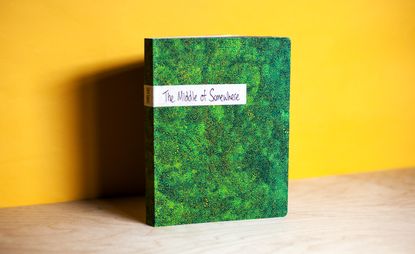
Once a London-based portrait and documentary photographer, Sam Harris was disillusioned by the commercialisation of creative industries and decided to take his family on the road. In pursuit of a radically different life, they spent a few nomadic years in India. Eventually they settled in Balingup, a rural town in the Southwest of Australia. Throughout this time, Harris has had his lens on his two daughters, Uma and Yali, documenting moments of domesticity, delight and discovery. A selection of which is now being published, family-album style, as The Middle of Somewhere.
The bulk of the book consists of photos of Uma and Yali in Australia. There is Uma with a bunch of blackberries, their juices staining her hands and the corners of her mouth a rich crimson. She gazes straight into the lens with a fascinating combination of enjoyment and annoyance at being interrupted mid-snack. This is set in diptych with another image of Uma’s hands, this time holding a fragile firetail, dead after crashing into a window.
There are pictures of older Uma helping her mother, Yael, clear away hailstones from the sunshade in their garden to save it from being damaged by a midsummer storm. Mother and daughter happen to have their bodies angled similarly in a poetic illustration of genetic inheritance.
In another picture, Yali is captured having just fallen off her tricyle, lying on the grass and about to burst into tears. Harris snaps a quick shot of her with his shoes in frame, before helping her back on her feet.
These portraits are punctuated by the occasional shot of cloud formations in an expansive sky, toiletries on a countertop, or the view of a forest road from behind the driving wheel. On their own peripheral, but collectively they offer an immersive portrait of their lives.
Everything about the book is entirely candid, shot, as Harris admits, on ‘everything from a full-blown Nikon DSLR, to a point-and-shoot, to an iPhone.’ Harris’ incredible eye for colour and lighting compensate for the lack of staging, and as a result, the book is not only a riveting read but also an aesthetic delight.
Two notebook sections supplement the volume: one with excerpts from the diary of Harris’ wife, Yael, where the trajectory of uncertainty, ambition and joy of their family experiences fill the page. The other section, ‘Travelogue’, shows images from their India years. Everything from Uma’s amazement on one of her first journeys as she gazes out of a ferry’s window to Yael on a birthing table as Yali is about to be born.
Like their nomadic life, The Middle of Somewhere was put together from far-flung corners of the world. Harris himself worked mostly from home in Balingup, with steady influence and support from his family (Yael was involved in the editing, while Uma drew the cover). Curator Eva Maria Kunz, who runs Ceiba Foto as a passion project but with tireless professionalism, is Italy-based. Many conversations were had over Skype before the two worked face-to-face for a week at Cologne’s PhotoBook Museum.
Despite the geographical constraints, the book is meticulously made. ‘When you go from an art dummy to a commercially-produced volume, you lose some of the authenticity,’ explains the photographer, ‘so it was important to us to keep a handmade element.’ Post-its once exchanged by Uma and Yali were scanned, reproduced and stuck onto the pages. Other notes had their edges steeped in tea to mimic the aged, scruffy appearance of the original. Even the title strip on the cover is glued on by hand to give the impression of a scrapbook.
The attention to detail has paid off handsomely, lending the tome a layer of familiarity. ‘I want to touch people, I want to make them think and realise that there are other ways of living,’ explains Harris.
His book expresses the rewards of a modest existence, of noticing the little things around us, and growing up with nature. Above all else, it is an extraordinary affirmation of the love of a father, and a reminder that family life can be the highest pleasure of all.
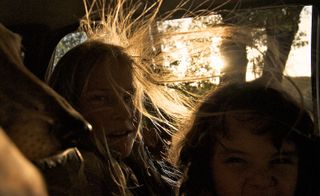
One of the most evocative images from the book captures billowing long hair, bathed in light coming through a car window.

The travelogue section of the book shows images from the Harris family’s early travels to India. The ones in this spread are from 2004, around the time Yali was born. The clinic where she was born had a sign saying ‘Don’t Worry / Smile / Nothing Will Happen’, Harris had the same graphic printed on the book’s muslin cloth packaging.

Post-its exchanged by Uma and Yali Harris years ago have been carefully preserved, reproduced on special paper and attached onto the page by hand.
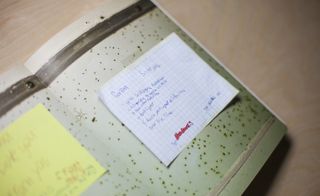
The note on the right had its edges dipped in tea to mimic the stained appearance of the original.

Handwritten messages between Uma and Yali give us a glimpse of the affection and occasional rivalry between the sisters.
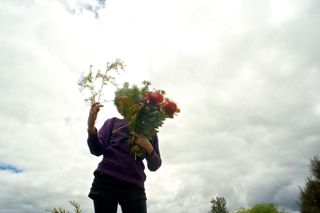
Harris’ wife, Yael prefers to stay behind the scenes. Here, a rare solo shot has a bunch of wildflowers shielding her face but nonetheless gives a sharp impression of her graceful personality.

A young Uma gazes out onto the open sea in pure wonderment, on one of her first journeys abroad.

A poetic image of the sky in Balingup. Shots like this one punctuate images of the family to give a taste of their day to day perspective.

The book contains many shots of Uma and Yali playing outdoors – a regular activity for them but increasingly rare experience for other children growing up in the digital world.

These two images are arranged side by side in the book. On the left, Uma gazes into the camera with a combination of enjoyment and annoyance as she is captured on lens with blackberry juice stained hands and mouth. On the right she cradles in her palm a firetail, which sadly died after crashing into a glass window.
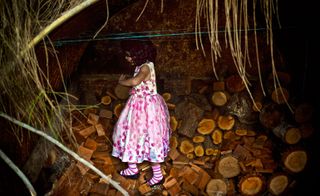
Harris shoot withs everything ‘from a full-blown Nikon DSLR to a point-and-shoot to an iPhone’ in order to capture authentic moments. Shown here is Yali engrossed in exploration, completely unaware of the camera’s presence.

The layout of the book is carefully considered. The diptych shows two introspective moments, with the turquoise of Uma’s towel and Cheepy’s feathers on the left echoing that of the umbrella on the right.
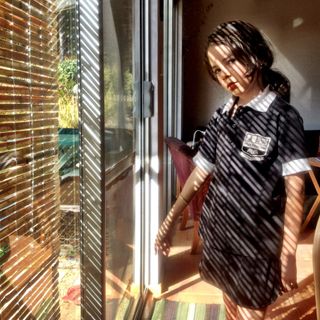
Despite a lack of staging, the book has many moments of artistic brilliance – such as this shot where window blinds cast a striped shadow.
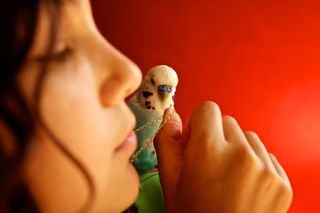
Harris’ images – such as this shot of Uma and Cheepy – are replete with vibrant colour and radiate an infectious love of life.
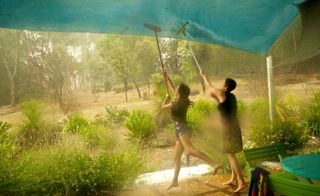
Harris took this photo in the mid summer, just as a freak storm brought hailstones down on their neighbourhood. Here, Uma and her mother, Yael are scrambling to remove hailstones from the sunshade in the garden.
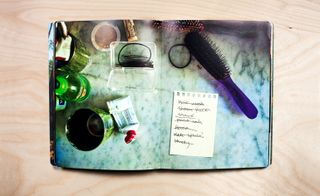
The book is punctuated with still lifes, such as this one showing toiletries on a counter, to offer readers further insight into the day-to-day of the family.

An old to-do list has been reproduced for this spread – a clever touch that makes the Harris’ family’s unique lives all the more familiar to the reader
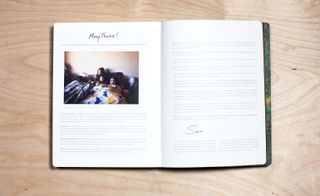
A limited print run of 600 gave Harris and his publisher, Eva Maria Kunz the freedom to include many handmade elements. This photo on the acknowledgements spread, of Harris’ parents on the first morning of their visit to Balingup, was developed separately before being stuck on.
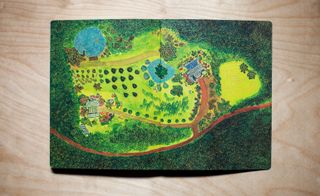
Uma’s drawing of an aerial view of their neighbourhood. The yellow circles on the green border represent trees. Upon seeing these, Kunz encouraged Uma to create an entire sheet in this pattern for the cover.
Wallpaper* Newsletter
Receive our daily digest of inspiration, escapism and design stories from around the world direct to your inbox
TF Chan is a former editor of Wallpaper* (2020-23), where he was responsible for the monthly print magazine, planning, commissioning, editing and writing long-lead content across all pillars. He also played a leading role in multi-channel editorial franchises, such as Wallpaper’s annual Design Awards, Guest Editor takeovers and Next Generation series. He aims to create world-class, visually-driven content while championing diversity, international representation and social impact. TF joined Wallpaper* as an intern in January 2013, and served as its commissioning editor from 2017-20, winning a 30 under 30 New Talent Award from the Professional Publishers’ Association. Born and raised in Hong Kong, he holds an undergraduate degree in history from Princeton University.
-
 In Van Cleef & Arpels’ high jewellery, the archival meets the au courant
In Van Cleef & Arpels’ high jewellery, the archival meets the au courantVan Cleef & Arpels pays tribute to its rich heritage with a captivating high jewellery collection
By Hannah Silver Published
-
 New Nothing Ear and Ear (a) earbuds: audio innovation with a retro nod
New Nothing Ear and Ear (a) earbuds: audio innovation with a retro nodNothing’s new Ear and Ear (a) earbuds, drawing inspiration from vintage portable hi-fi and packed with updates, help the company maintain its status as an audio innovator
By Jonathan Bell Published
-
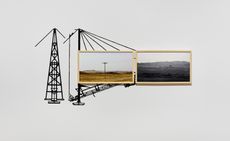 Aindrea Emelife on bringing the Nigerian Pavilion to life at the Venice Biennale 2024
Aindrea Emelife on bringing the Nigerian Pavilion to life at the Venice Biennale 2024Curator Aindrea Emelife has spearheaded a new wave of contemporary artists at the Venice Biennale’s second-ever Nigerian Pavilion. Here, she talks about what the world needs to learn about African art
By Ugonna-Ora Owoh Published